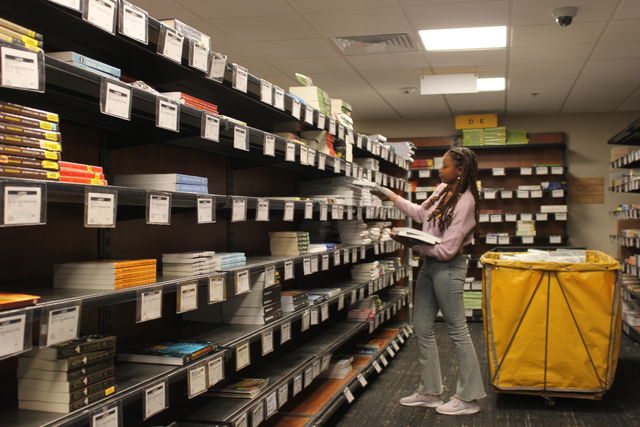With what it costs an average student to purchase a semester’s worth of textbooks, that value could just as easily pay for 13 inflatable Tyrannosaurus rex costumes, 19 Squishy Pillow Scrappy’s or 82 Mango-a-Go-Go smoothies from the Student Center Jamba Juice.
Students will see a specific textbook recommended on their syllabus and acquire it for class, though not without voicing their grievances: any college attendant or graduate can attest to this story. But what grievances do students have, and why do they still buy their textbooks despite them?
Price is undoubtedly the biggest criticism against college textbooks, a charge not without merit: a 2017 infographic from Applied Education System (AES) showed that the price of textbooks prices since outpaced the inflation rate by four times since 2006. With average prices rising by 812% since 1980, these costs outpaced the 512% growth of medical services and the 325% growth in new home costs.
This is supported by data on the specific prices of textbooks, with a July 2022 study from theEducation Data Initiative listing their average annual price between $628 to $1,471.
When surveyed on how they navigate the textbook market, nearly 58% of Kennesaw State students in a survey distributed by the Sentinel stated they preferred digital textbooks over physical ones. Interestingly, none of the 19 students surveyed said they typically bought their textbooks used.
One question asked whether or not students found their assigned textbooks useful for their classes: while five students gave a definitive “yes” or “no” answer, three for the former and two for the latter, a consistent sentiment among the remaining 14 was that they were mainly useful for major-specific classes.
Another criticism is the use of access codes, which when entered online grant students access to digital aids like practice assignments or study guides. These are exclusive to brand-new editions, requiring students to pay for costly textbooks to access class assignments. This accentuates the price issue, with students paying not just for the new textbook but also for the supplementary material.
The one-use nature of access codes reduces the resell value of textbooks, which is a crucial way for students to recoup the money spent on textbooks.
One reason for these massive costs deals with the industry around textbooks, as just five publishers, Scholastic, Cengage Learning, Houghton Mifflin Harcourt, McGraw Hill and Pearson, control almost 80% of the market. Many have noted the shortened time periodbetween new editions of textbooks, which results in increased purchases of textbooks, itself quickened by the reordering of content between editions, making older versions of a book less reliable.
Despite this, the textbook industry is still in great demand. The most obvious reason is that they will typically be required for a class, with 68% of professors in 2017 requiring them for their class. Not having one can severely undercut the odds of academic success.
Physical textbooks are undoubtedly a hassle, not just for the cost but also due to their weight and the space they take up, but there are some alternatives. E-textbooks are the most common one, and have several benefits: chief among them is being roughly 40-50% cheaper than their physical counterparts and easily accessible from a phone or computer, items already essential for any college student.
Students looking to buy textbooks can visit the school bookstore, either in person or online: those looking to buy books used or rent them can visit sites like Chegg, CampusBooks or BookFinder. VitalSource is a good resource for those looking to purchase textbooks digitally.


